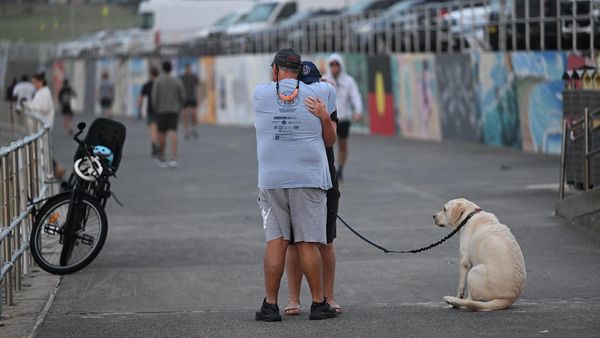The Netherlands is about to head to the polls in a snap general election following the collapse of the Schoof government, and immigration has been a hot topic of debate, particularly how much migrants cost the country's coffers.
For example, Dutch far-right commentator Eva Vlaardingerbroek recently made the claim on X that every non-Western immigrant in the Netherlands costs the national treasury an average of €600,000.
Her claims appear to be an exaggeration of figures published in a report on the long-term fiscal impact of immigrants in the Netherlands by Jan van de Beek and others.
It analysed the lifetime fiscal impact of migrants, dividing them by motive, such as labour, study and asylum, and their region of origin.
It found that migrants moving to the Netherlands for work make a positive net contribution of more than €100,000 each when they arrive between the ages of 20 and 50.
Migrants with other motives all bring negative net contributions: around €400,000 for asylum seekers and €200,000 for family migrants, according to the study, which added that the negative contribution is especially large for asylum seekers from Africa and the Middle East.
Therefore, Vlaardingerbroek's comments are an inflation of even the largest cost of immigrants shown in the report.
However, van de Beek's study and others like it have also been thrown into question by various Dutch economists as the election campaign reaches its climax on 29 October.
One of the biggest talking points has been his book Migratiemagneet Nederland ("Migration Magnet Netherlands"), published in 2024, which builds on a co-authored study Grenzeloze verzorgingsstaat ("Borderless Welfare State"), first released in 2021.
It estimates that the fiscal cost of migration to the Dutch treasury between 1995 and 2019 stood at €400 billion, attracting widespread attention from the Dutch media and politicians for its message that the welfare state could collapse if immigration continues as it is.

The Cube spoke to various experts who said that while the statistics on which van de Beek et al base their findings may be correct, they have been misinterpreted and do not reveal the true cost of immigrants.
For example, the "Borderless Welfare State" study said that immigrants cost some €17.3 billion yearly, after a net gain to the treasury of €3.4 billion was offset by €20.7 billion for public services.
"The latter figure was not based on data," said Jan Willem Gunning, professor of development economics at the Vrije Universiteit Amsterdam. "It was justified by a single sentence which amounted to a fundamental error: it was an argument for how much tax migrants should pay rather than to what extent the costs of public goods were caused by migrants."
Essentially, the study miscalculates migration costs by treating all public services as "rivalrous", meaning that a good or service's consumption by one person reduces its availability for another person.
Things like defence and flood protection are non-rivalrous, while the likes of police services and motorway management do need to be expanded as the population grows.
Gunning pointed us to an op-ed that he co-authored with Casper de Vries, professor at the Erasmus School of Economics at Erasmus University Rotterdam, and Alexander Rinnooy Kan, former senator and professor of economics and business at the University of Amsterdam.
They said that the €17.3 billion figure "is clearly too high".
"Our rough estimate suggests that a significant portion of the yearly €94.1 billion — about €40.5 billion — was spent on non-rivalrous pure public goods like defence," they said in the op-ed. "These costs don’t increase with population growth and shouldn't be allocated per capita. Only the remaining €53.6 billion in rivalrous goods should be considered, of which 22% — or €11.8 billion — is attributable to migration."
When taking the different types of services into account, the economists said that the supposed €17.3 billion "loss" caused by migrants in 2016 falls to about €8.4 billion per year, or less than 1% of GDP.
They also said that any extra net costs of migration are offset by additional economic benefits, such as the fact that migrants often work for lower wages and help sustain sectors of the Dutch economy.
The van de Beek study fails to take into account that immigrants' situation in a host country tends to change over time, too, according to de Vries, and instead assumes that "a 20-year-old in 2016 will behave like a 60-year-old from that same year in 2056".
"Several studies show that over time, these people become better and more highly educated, so the situation flips," he told The Cube. "They won't have the same skills then as they do now. They may pose a negative effect on the treasury at first, but that then becomes positive."
The welfare state can accommodate migrants
Another major criticism of van de Beek's study, and Vlaardingerbroek’s comments, is that they contribute to the harmful stigmatisation of migrants from certain parts of the world by singling them out, such as Africa and the Middle East, according to experts.
Migrants' contributions and situations, regardless of where they come from, tend to be the same as Dutch citizens with the same education level, and their contributions grow as time goes on, they said.
"There's no such thing as isolated communities not wanting to assimilate," said Leo Lucassen, professor of global labour and migration history at the University of Leiden and director of the International Institute of Social History in Amsterdam.
He said that certain groups of immigrants, such as asylum seekers, start by costing more than they put in because they are kept out of the labour market, but this changes once they are granted working rights.
"In the long run, they do integrate and contribute," Lucassen said. "They become Dutch, and their integration is up and running, despite some cultural differences."
When approached by The Cube, the Dutch Ministry of Asylum and Migration said that the average cost for accommodating an individual asylum seeker is approximately €71 per day.
"In addition, there are expenses related to the registration, security, and assessment of asylum applications," it said.
The total 2025 budget for the admission and reception of foreigners, including asylum seekers, stands at about €9.48 billion, or less than 1% of the Netherlands' GDP.
Ultimately, the Dutch welfare state is not facing inevitable collapse due to immigration as the van de Beek study suggests, according to Lucassen.
"The figures might be right, but the conclusion that the welfare state can't accommodate migrants is ridiculous," he said. "Over the long run, there has generally been no upward trend in the number of asylum seekers since the late 1980s, and the welfare state has survived."







